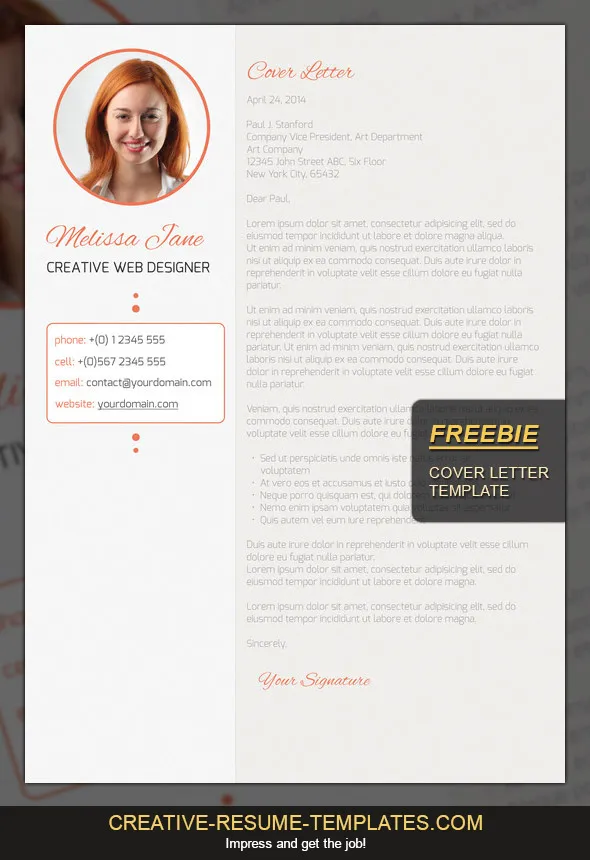What is a Cover Letter Template
A cover letter template is a pre-formatted document that serves as a framework for writing a personalized cover letter. It provides a structure, including sections for contact information, greetings, body paragraphs, and a closing. This template streamlines the cover letter creation process, offering a foundation upon which job seekers can build to showcase their qualifications and express their interest in a specific position. Cover letter templates ensure a consistent and professional presentation while saving time and effort. They are essential tools for anyone navigating the job application process, ensuring a polished and effective introduction to potential employers. Consider these as a starting point for your individual application.
Why Use a Cover Letter Template
Using a cover letter template offers several advantages. It simplifies the writing process, saving time and reducing the stress of creating a cover letter from scratch. Templates provide a structured format, ensuring that all essential components are included, such as contact details, a professional greeting, a compelling introduction, and a strong closing. Templates also help job seekers maintain consistency and professionalism in their job applications, which is important in the competitive job market. They allow applicants to focus on tailoring the content to match the specific job requirements and highlight their unique skills and experiences. Furthermore, templates serve as a guide, helping job seekers avoid common mistakes and ensure that their cover letters meet industry standards.
Key Components of a Cover Letter Template
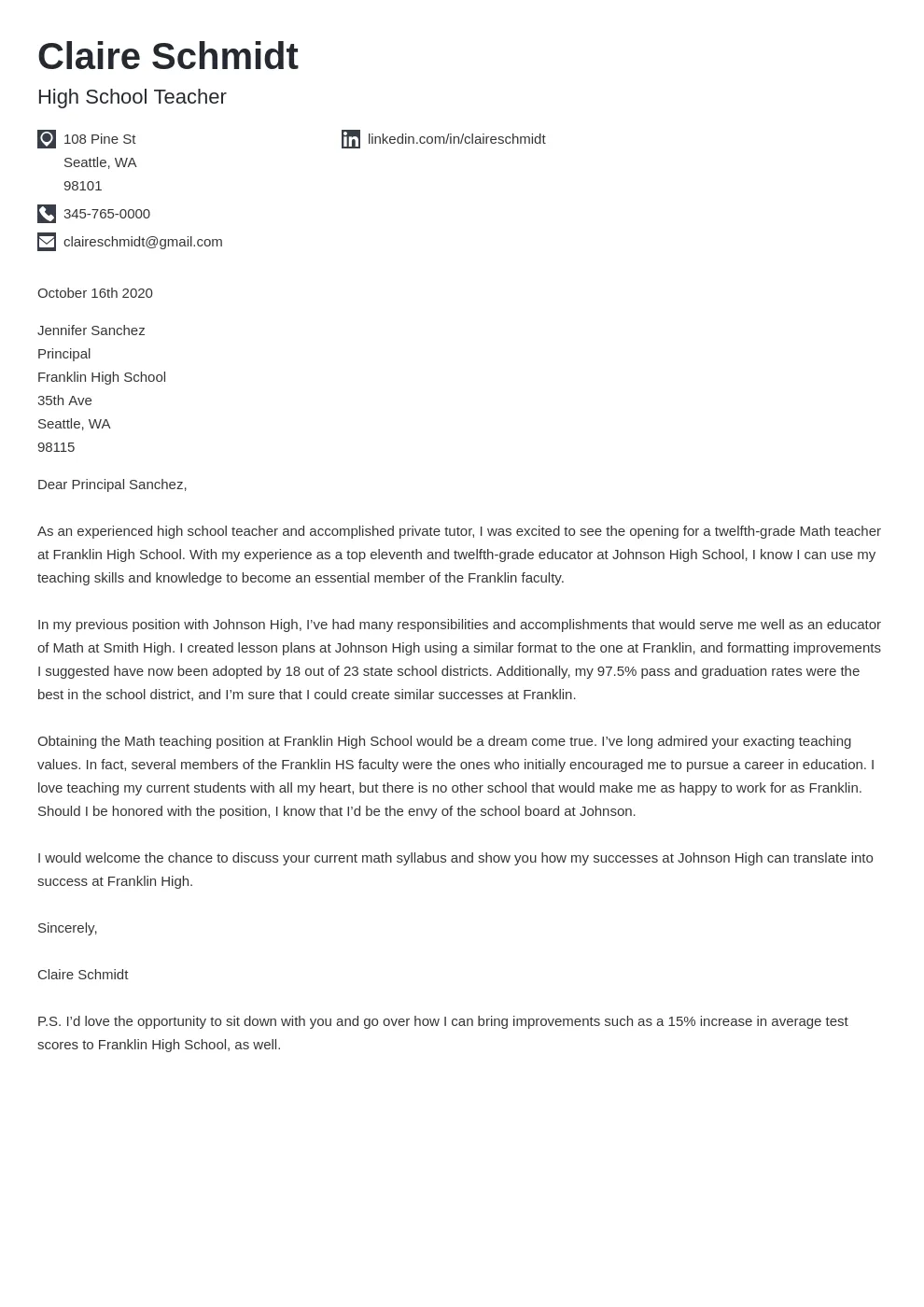
A cover letter template typically includes several key components, which are essential for creating a compelling and effective job application. These include the applicant’s contact information at the top, usually their name, address, phone number, and email address. Following this, there is space for the hiring manager’s details, such as their name, title, and company address. A professional greeting, such as “Dear Mr./Ms. [Last Name],” is crucial for making a good impression. The opening paragraph should immediately capture the reader’s attention, stating the position being applied for and expressing enthusiasm. The main body paragraphs should highlight relevant skills and experience, providing examples of accomplishments and how they align with the job requirements. The closing paragraph should include a call to action, inviting the hiring manager to contact the applicant for an interview, and conclude with a professional signature.
Your Contact Information
At the top of your cover letter template, clearly and concisely present your contact information. This usually includes your full name, street address, phone number, and professional email address. Ensure that the information is accurate and up-to-date, as this is how potential employers will reach you. The presentation should be clean and easy to read, often aligned to the left or right. The contact section ensures that the hiring manager can quickly find your details and reach out if they are interested in your application. It is vital that you double-check all information for any errors to avoid missing out on any opportunities.
The Hiring Manager’s Information
Directly below your contact information, include the hiring manager’s details. This demonstrates that you have taken the time to research the company and the specific role. If possible, include the hiring manager’s name, title, and the company’s address. If you are unsure of the hiring manager’s name, try to find this information through the company website, LinkedIn, or the job posting itself. Addressing the cover letter to a specific person creates a more personal connection and shows that you have invested time in your application. If you cannot find a name, use a general greeting such as “Dear Hiring Manager” instead of a generic “To Whom It May Concern.”
Professional Greeting
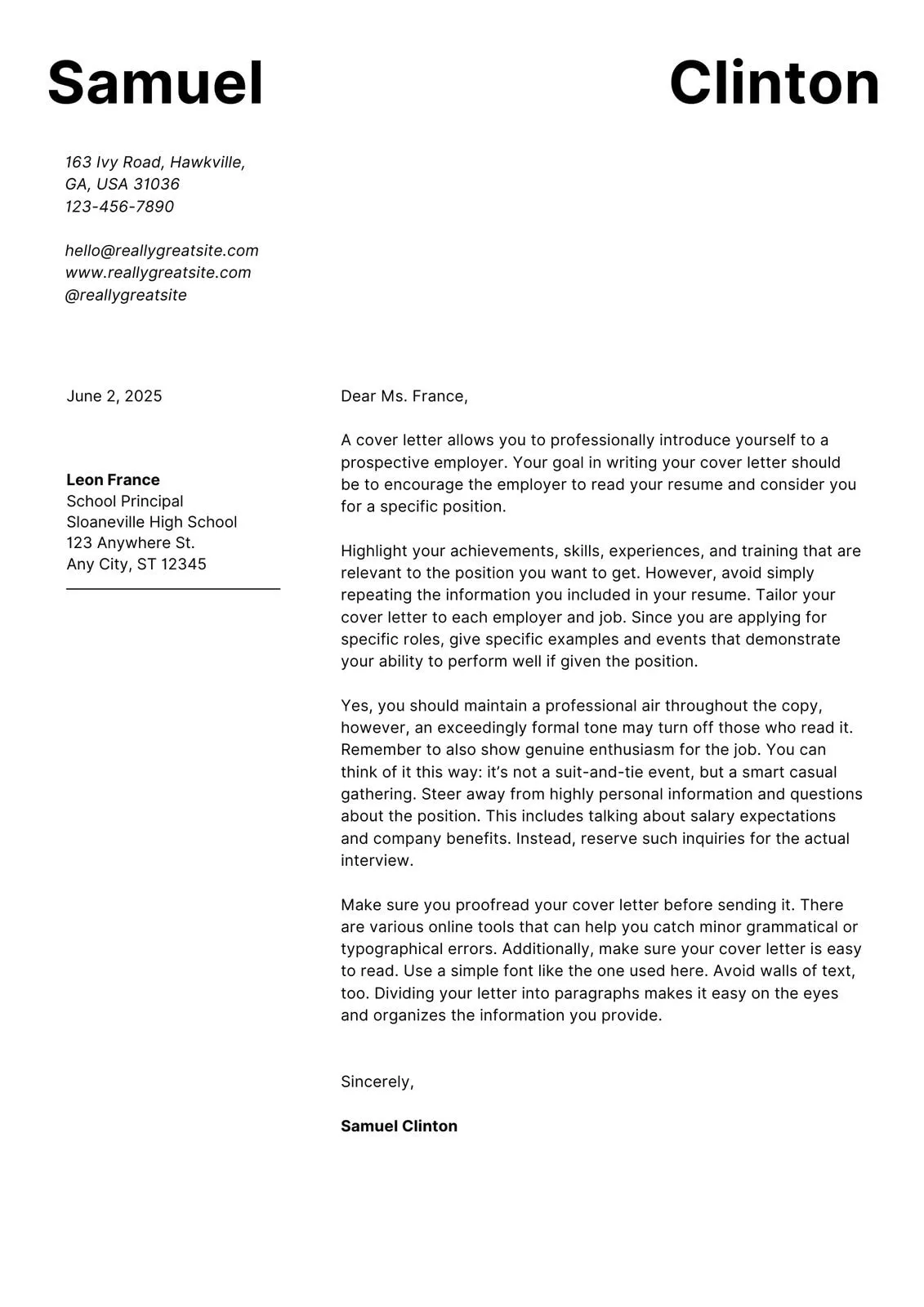
The greeting sets the tone for your cover letter, so it must be professional and appropriate. Ideally, address the hiring manager by name, using “Dear Mr./Ms./Mx. [Last Name].” Research the person’s name and title to avoid any errors. If you are unsure of the gender, use a general greeting such as “Dear [First Name] [Last Name]” or “Dear Hiring Manager,” if a specific name isn’t available. Avoid casual greetings such as “Hello” or “Hi,” as they can appear less professional. The greeting should be aligned to the left or right and followed by a comma to indicate a formal tone.
Opening Paragraph Create an Impact
The opening paragraph is your opportunity to capture the hiring manager’s attention and make a strong first impression. Start by clearly stating the position you are applying for and where you found the job posting. Express your enthusiasm for the role and the company, demonstrating that you have a genuine interest in the opportunity. Briefly mention a key skill or experience that aligns with the job requirements to pique the reader’s interest. Keep it concise and focused, aiming to hook the reader and encourage them to continue reading. It should reflect your excitement about the position and show that you are a good fit.
Highlight Your Skills and Experience
The body of your cover letter is where you highlight your skills and experience. Focus on the key skills and experiences that are relevant to the job requirements. Tailor your content to match the specific needs of the position by reviewing the job description carefully. Provide specific examples of your accomplishments, using the STAR method (Situation, Task, Action, Result) to illustrate how you have achieved results in previous roles. Use keywords from the job description to show that you understand the role and the company’s needs. This will help you stand out from other applicants. Quantify your achievements whenever possible. Use action verbs to describe your contributions, and always keep your audience in mind.
Showcase Relevant Accomplishments
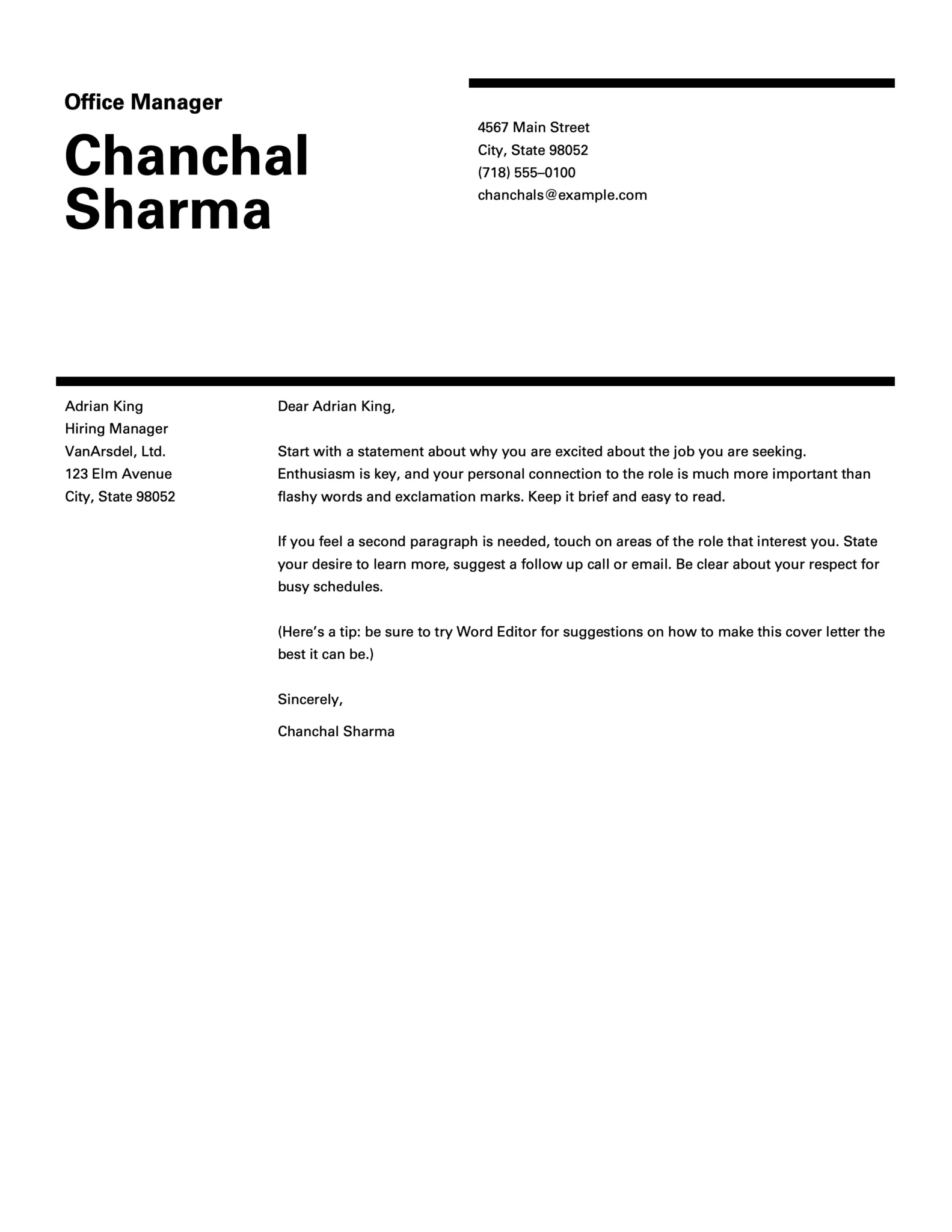
To showcase your qualifications, include specific accomplishments that demonstrate your capabilities and the value you can bring to the company. Focus on achievements that are relevant to the job description. Provide concrete examples of your results, such as how you increased sales, improved efficiency, or solved a problem. Quantify your accomplishments whenever possible by using numbers and data to illustrate the impact of your work. Use the STAR method (Situation, Task, Action, Result) to provide context and clarity, helping the hiring manager understand the situation, your role, the actions you took, and the outcome of your efforts. Tailor your examples to the specific requirements of the job to make your application more compelling. Show how you have exceeded expectations.
Express Enthusiasm for the Role
Demonstrate your enthusiasm for the role and the company throughout your cover letter. Express your interest in the specific job and explain why you are excited about the opportunity. Highlight what attracts you to the company’s mission, values, or culture. Show that you have researched the company and understand its goals. This level of engagement shows that you are not just applying for any job but are genuinely interested in this specific role and organization. Mention any specific aspects of the job that you find particularly appealing. Show that you envision yourself succeeding in this position. This genuine interest will make a positive impression.
Call to Action Request an Interview
Conclude your cover letter with a clear call to action, which prompts the hiring manager to take the next step. Express your interest in an interview and make it easy for them to contact you. State your availability for an interview, making it clear that you are eager to discuss your qualifications further. Provide your contact information again or indicate that it is included in the header of the document. Thank the hiring manager for their time and consideration. Express your appreciation for their review of your application. A clear call to action ensures that the hiring manager knows what you want them to do next and increases your chances of moving forward in the hiring process.
Closing and Signature
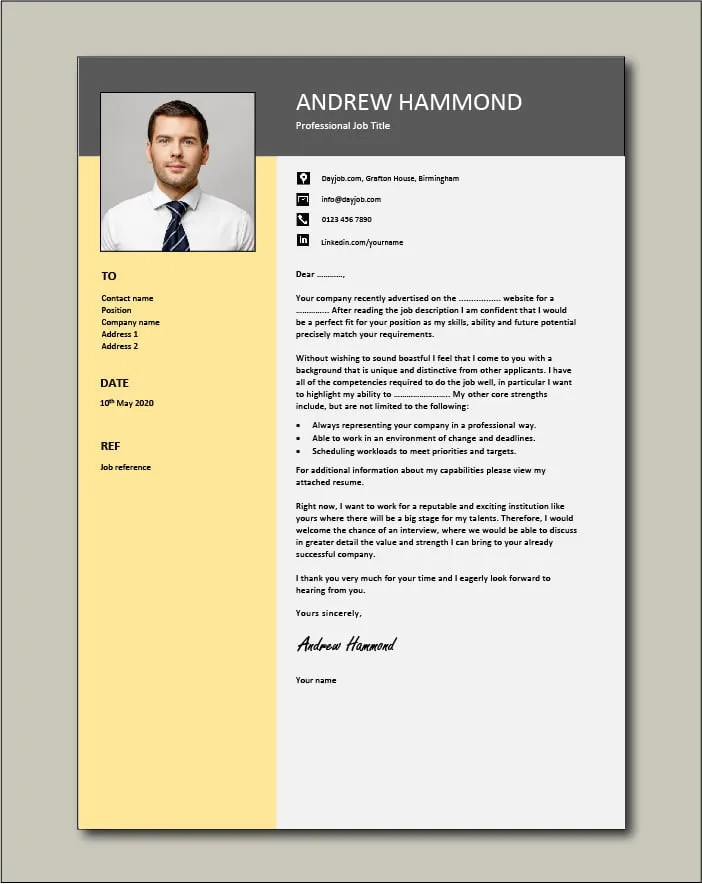
Close your cover letter professionally, ensuring a polished finish. Choose a formal closing such as “Sincerely,” “Best regards,” or “Thank you.” Follow your closing with a space for your handwritten signature if printing the letter. Type your full name below the closing. Ensure your signature is legible if you are printing the letter. The closing and signature section completes the professional tone of your cover letter. It reinforces your professionalism and attention to detail. Proofread the entire letter for any errors, and ensure the closing and signature section is consistent with the rest of the document.
Formatting Tips for Your Cover Letter
Formatting is essential for making your cover letter look professional and easy to read. Use a standard, readable font such as Times New Roman, Arial, or Calibri, with a font size between 11 and 12 points. Maintain consistent formatting throughout the document, using the same font, size, and style for all sections. Use single spacing within paragraphs and double spacing between paragraphs. Align the text to the left and avoid justifying it, which can create uneven spacing. Keep the margins at 1 inch on all sides. Divide your cover letter into clear sections with headings to improve readability. Use bullet points to highlight key skills, accomplishments, and information. Proofread your cover letter carefully to eliminate any errors in spelling, grammar, and punctuation.
Different Cover Letter Template Formats
There are several different cover letter formats to consider, each suitable for different situations. Choosing the right format can significantly impact your application’s effectiveness. The most common formats include the traditional, modern, and skills-based cover letters. The traditional format is straightforward and professional, ideal for conservative industries and roles. The modern format uses a more creative layout and design, making it suitable for creative fields or roles that value innovation. The skills-based format emphasizes your skills and accomplishments, making it the most suitable format for those with limited experience or those changing careers. Consider the specific role, industry, and your personal branding when selecting the appropriate cover letter format.
The Traditional Cover Letter
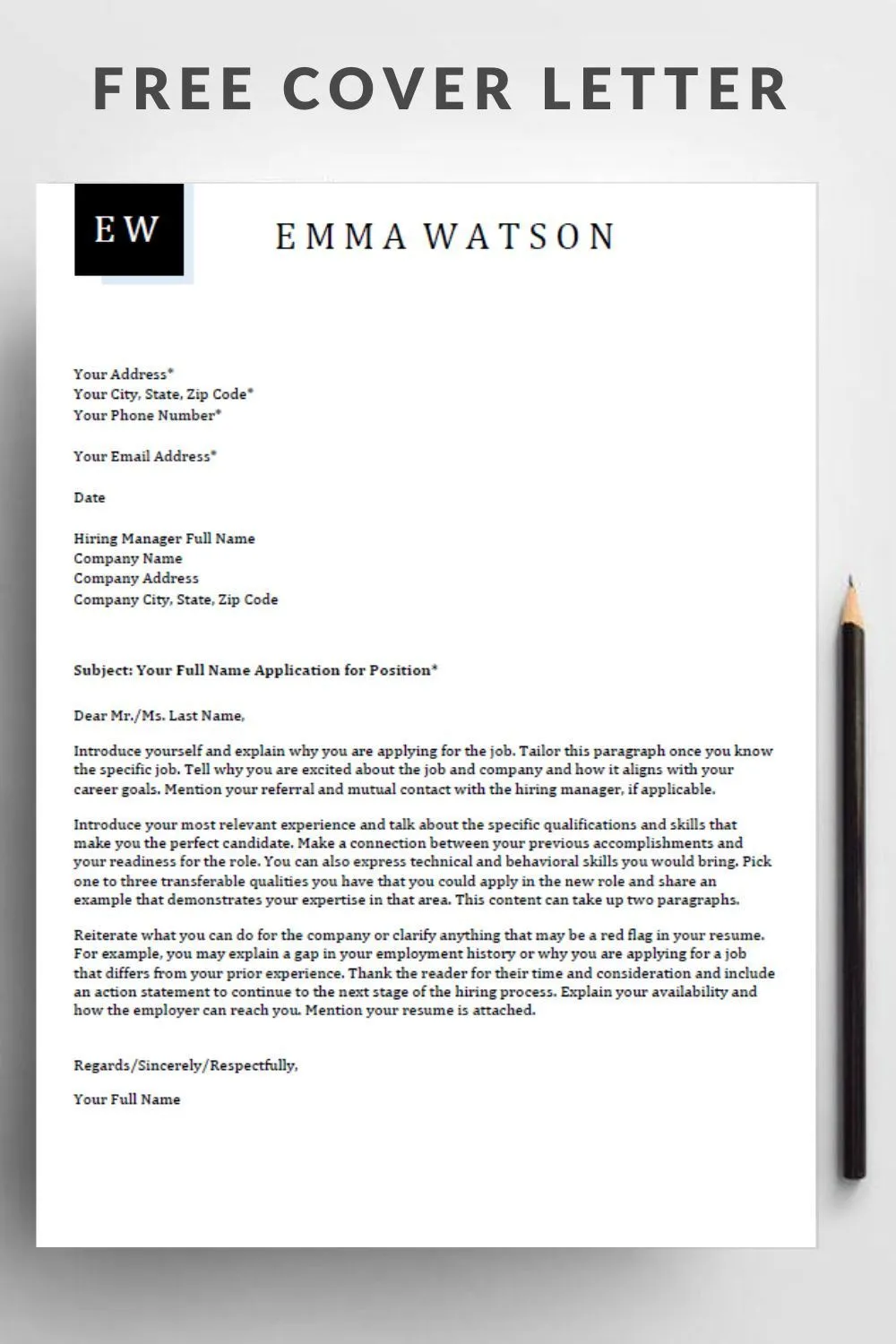
The traditional cover letter is the most common and widely accepted format, best suited for professional environments and conservative industries. This format follows a standard structure. Start with your contact information, the hiring manager’s information, and a formal greeting. The body of the letter includes an introduction that states the position you are applying for. The middle paragraphs should showcase your relevant skills, experiences, and accomplishments. The final paragraph should reiterate your interest in the role and include a call to action. The traditional cover letter maintains a professional tone and emphasizes your qualifications and achievements. It’s a tried and true approach that provides a solid foundation for any job application.
The Modern Cover Letter
The modern cover letter format is appropriate for creative industries and companies that embrace innovation. It allows for a more visually appealing design, often incorporating elements such as color, graphics, and unique layouts. This format may include a summary section near the top, which quickly highlights your key skills and experiences. It might also feature a section dedicated to your personality and style. The modern cover letter aims to grab the reader’s attention with its design. It can differentiate you from other candidates. Ensure your modern cover letter is easy to read and professional. Make certain that the design enhances the content rather than distracting from it. The modern approach is ideal for roles where creativity and visual appeal are highly valued.
The Skills-Based Cover Letter
The skills-based cover letter format, also known as the functional format, emphasizes your skills and abilities. It is particularly useful for those with limited work experience or who are changing careers. The structure of this letter prioritizes your skills over your work history. Each skill is highlighted in its own section, with supporting examples from past experiences. This format demonstrates your capabilities and shows how they align with the job requirements. It’s an effective way to showcase your qualifications and highlight the skills that make you an ideal candidate, even without a long history in a specific field. It makes the most of transferable skills and capabilities.
Where to Find Cover Letter Templates
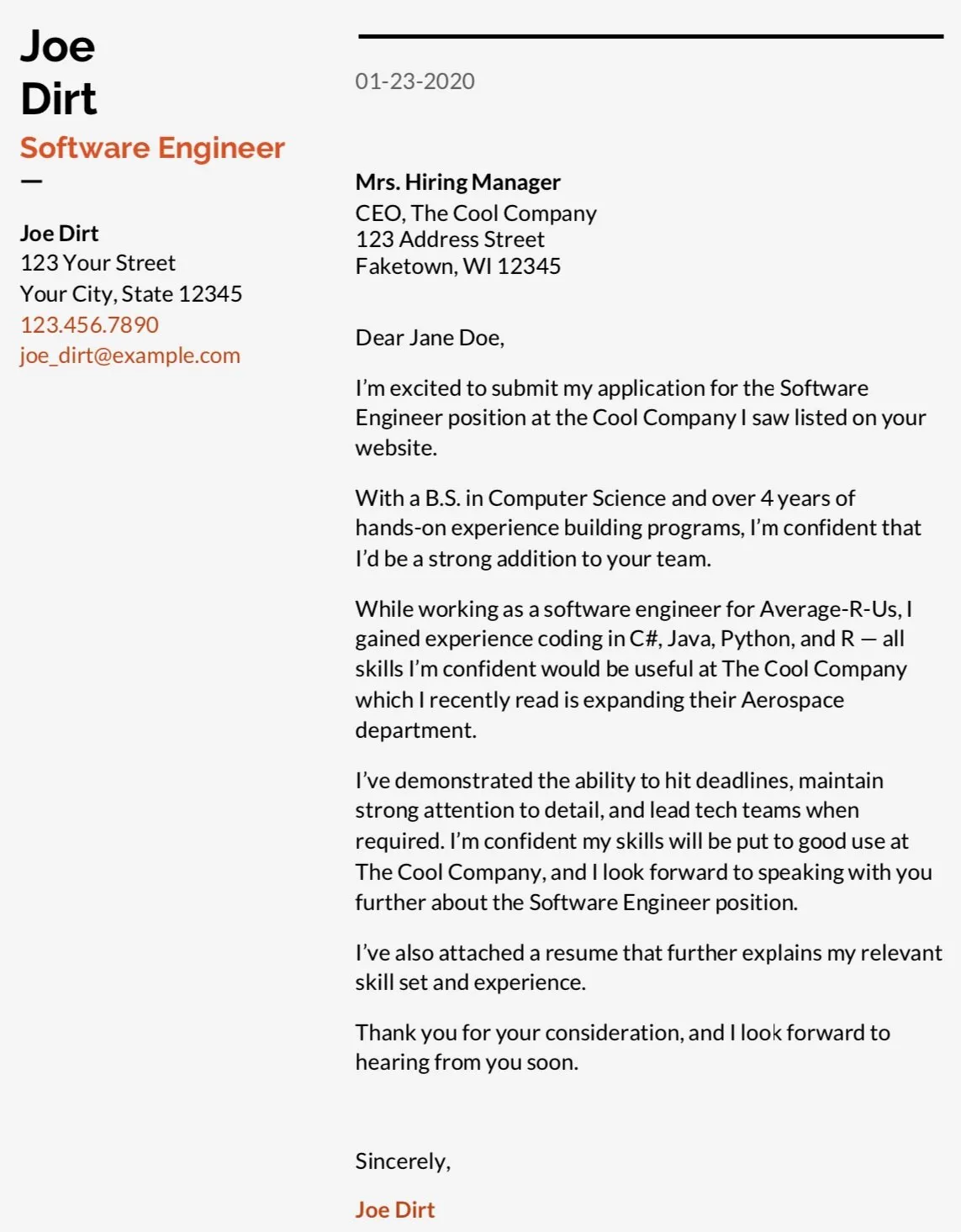
Numerous online resources offer cover letter templates. Many websites provide a range of templates, covering various industries, job types, and formats. Popular platforms include resume-building websites, career advice sites, and online document creation tools. When selecting a template, ensure it is professional and appropriate for your industry and the specific job you’re applying for. Choose a template that is easy to customize with your information and allows you to highlight your relevant skills and experiences. Consider the format and design of the template to ensure it reflects your personal brand. You can easily search for ‘cover letter templates’ to find numerous free and paid options. You can also look at professional resume writers for templates.
Using a Template in Practice
To use a cover letter template effectively, start by selecting a template that aligns with your needs and the job application. Download the template and save it with a descriptive file name. Replace the placeholder text with your personal information, tailoring the content to the specific job requirements. Ensure your contact information is accurate and up-to-date, and that you include the hiring manager’s details if available. Customize the body paragraphs to showcase your relevant skills, experiences, and accomplishments. Keep the language clear, concise, and focused. Proofread the entire document carefully to eliminate any errors. Using a template is an effective way to begin, but personalization is the key. Make it your own.
Customizing a Cover Letter Template
Customizing a cover letter template involves personalizing it to fit your unique skills, experiences, and the specific job application. Begin by reading the job description carefully. Identify the key requirements and keywords. Then, customize your cover letter to address these requirements. Highlight the skills and experiences that match the job description, using specific examples to showcase your accomplishments. Tailor the language and tone of the cover letter to match the company’s culture and the industry. Use keywords from the job description throughout the document. Proofread the cover letter to ensure accuracy and clarity. The customization is essential for creating a strong and personalized cover letter that captures the attention of the hiring manager. This will distinguish you from the competition.
Proofreading and Editing Your Cover Letter
Proofreading and editing your cover letter is a crucial step in ensuring a professional and polished document. Begin by checking for any spelling, grammar, and punctuation errors. Read the cover letter carefully, line by line, looking for mistakes and inconsistencies. Use a spell-checker and grammar-checker, but do not rely on them entirely. The tools may miss contextual errors. Make sure your sentences are clear and concise. Ensure that the tone and style of your cover letter are appropriate for the job. Seek feedback from a trusted friend, family member, or career advisor to get a fresh perspective. Proofreading and editing demonstrate your attention to detail and improve your chances of making a positive impression.
Frequently Asked Questions about Cover Letter Templates
Several frequently asked questions arise when using cover letter templates. One common question is, “Can I use the same template for all jobs?” The answer is no. Cover letter templates should be customized for each job application. Another common question is, “How long should a cover letter be?” A cover letter should generally be one page long and concise. The length depends on the job. Applicants also ask, “Where can I find free cover letter templates?” Numerous online resources offer free templates and can assist with the application process. Also, “Do I need a cover letter for every job application?” In most cases, the answer is yes. A cover letter provides an opportunity to introduce yourself and express your interest in the role.
Conclusion Final Thoughts
Cover letter templates are a valuable tool for job seekers, but remember that customization is key. Selecting and personalizing the template to suit your specific needs and the job requirements is important. Use the template as a starting point, and tailor the content to highlight your skills, experiences, and qualifications. Proofreading and editing your cover letter carefully will ensure that it is professional and free of errors. A well-crafted cover letter template can significantly increase your chances of making a positive impression on hiring managers. Focus on tailoring your letter. Be sure to highlight what makes you a good fit. Using a template will help to streamline your job search, making the process easier and more effective.
